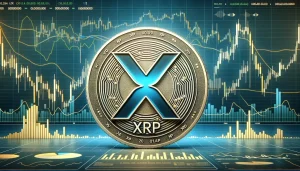- Neo blockchain has released a roadmap to guide its migration from testnet to mainnet.
- N3 plans to create a smart economy network where all assets will be accessible with minimal trust and permission.
Community-driven blockchain Neo has marked a significant moment by unveiling the roadmap towards its Neo N3 mainnet and migration. Neo N3 creates an open network for the smart economy as a complete overhaul and optimization. Through it, anyone and any program will have access to all assets, physical or virtual, with minimal trust and permission.
In July 2018, Neo’s founder Erik Zhang first announced the network’s plan to develop N3. Since then, the blockchain sector has undergone significant change. Nonetheless, Neo still maintains its commitment to building a smart economy and plans to deliver revamped features through N3. These include platform-native decentralized storage and oracles and foundational upgrades such as a restructured governance system. Optimized architecture and a refined economic model also make the list. Together with N3’s multi-language support and premium tooling system, these upgrades will make Neo N3 the best of its kind.
Last week we launched #NeoN3 RC4, which we hope will graduate to become the Neo N3 Formal TestNet. Now, we will begin rolling out the Neo N3 MainNet.
Read more to find out what’s going to happen while we are ready for Neo N3 MainNet launch and migration.https://t.co/eLYHXKVcLb pic.twitter.com/gbI2asGurd
— Neo Smart Economy (@Neo_Blockchain) July 26, 2021
NEO N3 mainnet launch
The full-scale launch of Neo N3 will involve four stages to ensure a seamless transition. Namely, they are formal testnet, mainnet setup, “early bird” token migration or voting, and mass migration.
The first formal testnet stage took place on July 20 when Neo released its codebase. The network will now start taking up important components including initial Council members, Oracle nodes, and NeoFS nodes. Neo will then republish the codebase as the formal testnet right after network stability is confirmed. Also at this time, testing of token migration and application will begin.
In the second mainnet setup stage, the Neo mainnet will go live with the minting of the N3 genesis block. Thereafter, initial Council members and nodes will have defected from the formal testnet to the Neo N3 mainnet. Additionally, the Neo Foundation will migrate its GAS and Neo token (NEO) supply from Neo Legacy to Neo N3.
Final steps for migration to N3
A week after the genesis block, stage three of “early bird” token migration or voting will take place. Here, NEO holders who are early migrators will have a vote in the network’s new governance system. They will also have the opportunity to earn revenue surpassing average values. Moreover, decentralized applications (DApps) will also start being migrated to the mainnet. Grant programs for developers will also be relaunched.
Nevertheless, during this period, it might be difficult for users to trade or exchange their tokens. This is because there will be limited NEO token support from service providers like exchanges and wallets.
Finally, mass migration will take place in the fourth stage. By this time, all constituents for a stable operation, including operational DApps, explorers, and wallets, will be in place. To encourage migration from Neo Legacy to N3, a token migration incentive program will be launched. At this point, the NEO Legacy GAS generation will be terminated.
Der Beitrag Neo releases roadmap to Neo N3 mainnet implementation and migration erschien zuerst auf Crypto News Flash.




















